When you’re planning to wild camp in Norway, you are probably dreaming about waking up next to a beautiful fjord after a great night of sleep in your tent. This was exactly why me and my girlfriend wanted to wild camp during our road trip across Norway. In Norway, there’s no law against wild camping (yay!), but there are some rules that you have to follow. Also, it’s sometimes difficult to find a wild camping spot that matches all your criteria.
So how do you find a wild camping spot in Norway? With these 5 steps, I’m sure you’ll be successful on your road trip:
- Figure out what you absolutely need in a wild camping spot.
- Start looking well before it gets dark.
- Get off the main roads! We found the most success when looking for unpaved, long winding roads that eventually hit a dead end.
- Don’t be too critical!
- Minimize your footprint (take your trash with you).
This article covers everything you need to know in order to find the perfect wild camping spot. I’ve included a map of our actual wild camping spots with a step-by-step guide on how we found these spots. After reading this post, you’ll surely know how to find the best wild camping spots on your road trip through Norway (like this one here).
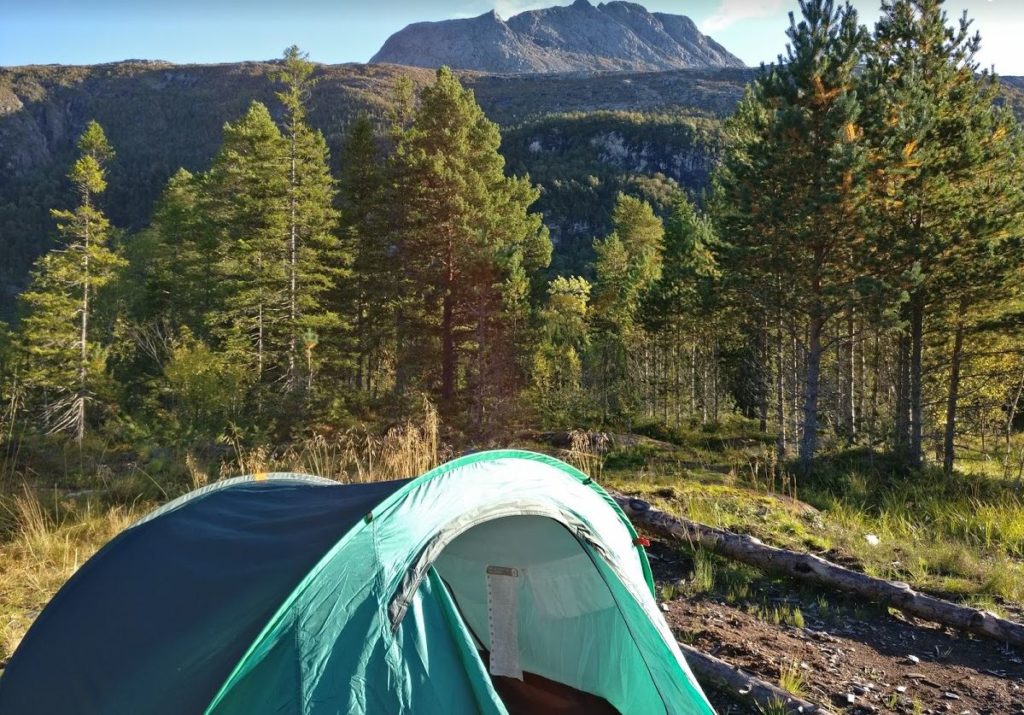
Let’s go!
Contents
Contents
Our actual wild camping spots
At the end of 2017, we spent 3 weeks in Norway on a huge road trip. We started in the south (at Kristiansand) and drove all the way up to Tromsø (deep inside the Arctic Circle!). We managed to wild camp multiple times in the polar circle, underneath the northern lights. Needless to say, this was an amazing experience.
This map below shows all the locations where we wild camped in Norway.
You’ll notice that some of these locations are not wild camping locations! If you’re thinking “ugh, these guys are lying!” then don’t leave just yet! I included these hostel and B&B nights on this map to show you that we did occasionally rent a room. We had to shower once in a while, for obvious reasons! 🙂
Rules about wild camping in Norway
As you probably know by now, there is no law against wild camping in Norway. In fact, the “right to roam” explicitly states that you’re allowed to pitch a tent in the wilderness. However, there are some rules that you should be aware of.
Here are the most important ones:
You may put up a tent, or sleep under the stars, for the night anywhere in the countryside, forests or mountains, as long as you keep at least 150 metres away from the nearest inhabited house or cabin. This rule of a 150 metres distance also applies to camping cars and caravans.
https://www.visitnorway.com/plan-your-trip/travel-tips-a-z/right-of-access/
Here’s another:
If you want to stay for more than two nights in the same place, you must ask the landowner’s permission, except in the mountains or very remote areas.
https://www.visitnorway.com/plan-your-trip/travel-tips-a-z/right-of-access/
And another…:
Campfires in or near forests are prohibited from 15 April to 15 September.
https://www.visitnorway.com/plan-your-trip/travel-tips-a-z/right-of-access/
But arguably the most important rule, in my opinion, is this one:
Don’t litter and don’t leave any of your trash behind!
This is one of the most important rules. This rule is not just exclusive to wild camping (as you’re not allowed to litter anywhere) but it’s really important that you do not leave any of your trash behind. During our wild camping road trip, we always carried garbage bags with us, which we took in our car and only disposed of in a public garbage bin.
Norway is a beautiful country, and wild camping is one of the things that make your Norway experience unique. But if you’re going to litter, you might be the reason why Norway will eventually get rid of this “right to roam” law. And I – nor any Norwegians – want that to happen.
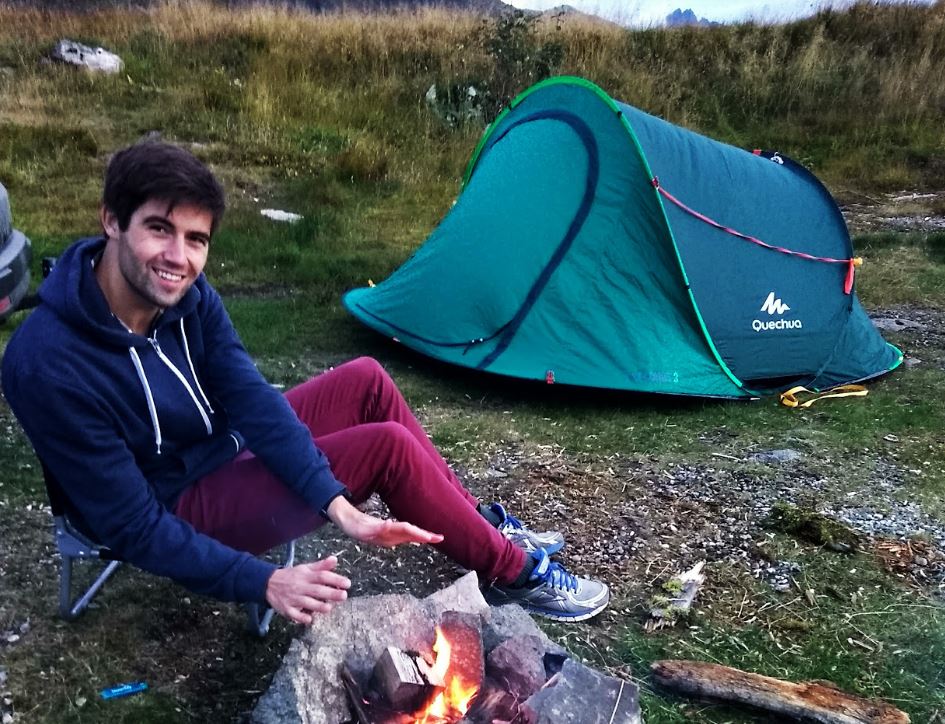
How to find a perfect wild camping spot
Here’s how to find the perfect wild camping spot for your situation.
Step 1: Figure out what you need
This seems like a weird first step, right? It will all make sense in a minute.
You see, when we were road tripping across Norway in September 2017, we had a car filled with our equipment (and that of my parents) so we didn’t feel comfortable leaving the car behind. That meant that we had to not just find a good wild camping spot, but also one where we could park the car next to our tent. This generally made it much more difficult, as we had to skip some beautiful wild camping spots just because we couldn’t find a place to park our car.
Either way, this is the list of our requirements:
- a flat spot that’s not on a slope
- slightly covered by trees or bushes in order to keep the wind out (it really helps with the cold!)
- at least 150 meters away from the nearest cabin or house (as per the law)
- accessible for our car, which weighed well over 2,000 kilograms!
That last one is obviously optional for you.
Here are some things that were NOT required for our wild camping spots. They fitted more in the “nice to have” category. 😉
- next to a lake or a river. a) because it was nice to wash our faces and hands in cold water, and b) because this is the stuff that I dreamed of while planning this wild camping road trip.
- within range of a mobile signal (so we could call 911 if… I don’t know, we were attacked by a wolf)
It’s important to know what you’re looking for before you actually start looking.
Step 2: Start looking for a wild camping spot well before it gets dark
During our 3 weeks in Norway, we only didn’t manage to find a wild camping spot once. After driving around for an hour, we threw in the towel and booked a last-minute room in a nearby hostel.
What went wrong here? It was too late in the day before we even started looking for a wild camping spot. The sun was already down when we started looking, which gave us about 1 hour before it was pitch dark. As you can imagine, it’s pretty much impossible to find a wild camping spot in the dark.
Therefore, it’s best to start looking about 1,5-2 hours prior to sunset.
Step 3: Get off the main roads
This might sound obvious, but you’ll never find a wild camping spot next to a busy main road. You have to enter small, sometimes unpaved roads in order to get to the best spots.
Here are some good indications when looking for a nice road to try:
Unpaved roads
Unpaved roads are generally less busy, more rural and less populated. This means it’s much easier to find a flat piece of land that’s not within 150 meters of any buildings.
A road circling a lake or fjord
Norway is quite a mountainous country, meaning it can be difficult to find a flat piece of land. In our experience, it was easier to find a flat piece of land near a lake or a fjord. Generally, the further you venture into the mountains, the more difficult it becomes to find a level area that’s clear from any rocks or trees.
A long and winding road that eventually hits a dead end
This is perhaps the biggest success factor when looking for the perfect wild camping spot: a long road that eventually leads to a dead end.
Why? Because this means that it’s not that busy, and only used by a handful of people. This means that you’ll have a higher chance of stumbling upon that perfect camping spot.
Here’s an example of how we put it all to practice. We found an unpaved road when driving on the main road. We noticed on Google Maps that it was a long road that eventually hit a dead end. About 2 kilometers down this road, we stumbled upon a fantastic wild camping spot!
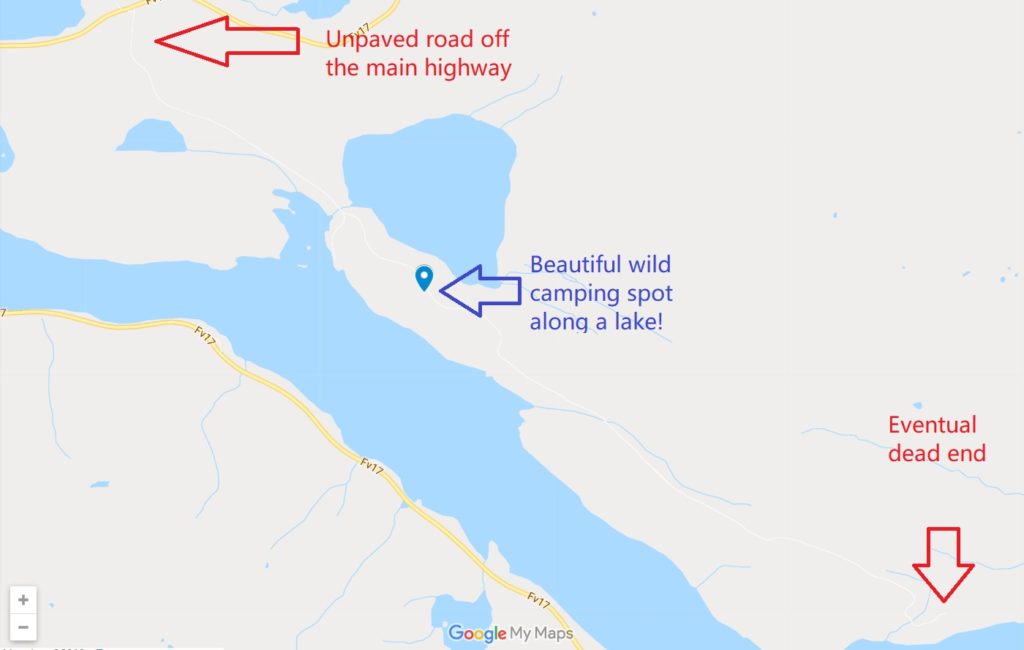
Step 4: Don’t be too critical
I must be honest here, we didn’t always find the “perfect” camping spot. The truth is, you can probably spend the entire day looking for the perfect wild camping spot.
We found that you eventually have to accept the spot that fits your “needs to have”, even when it doesn’t match your “nice to have” list of criteria. For example, we camped in the middle of a windy grass field that was far from spectacular, but we found it after just 10 minutes of searching and we were okay with it.
Not every spot will be perfect.
Also, there’s a factor of luck involved. As far as I know, there’s not (yet) an app where people can add their wild camping spots for everyone to see and rate. You’ll never know what you’ll find before turning into an unpaved road. You just have to try and see what you’ll find!
Step 5: Try to minimize your footprint
Once you’ve found your perfect camping spot, you’ll have to make sure to do the following:
- Pick up any trash in the area (not just yours!) and throw it away or put it in a garbage bag
- If you’ve made a campfire, make sure the fire is completely out before you leave
The “right to roam” is an amazing law that we (as tourists) must respect. If we don’t minimize our footprint when wild camping, chances are the government will eventually ban wild camping altogether. I sincerely hope you understand and respect these rules prior to visiting Norway.
Let’s keep this country beautiful.
Pictures of our wild camping spots in Norway
It’s time to put my money where my mouth is. It’s time to show you the wild camping spots that we managed to find during our 3-week road trip in September 2017. These pictures were taken at all the locations that I’ve marked on the map at the top of this article!
By following the steps above, I’m sure you’ll be able to find similar wild camping spots as we did:
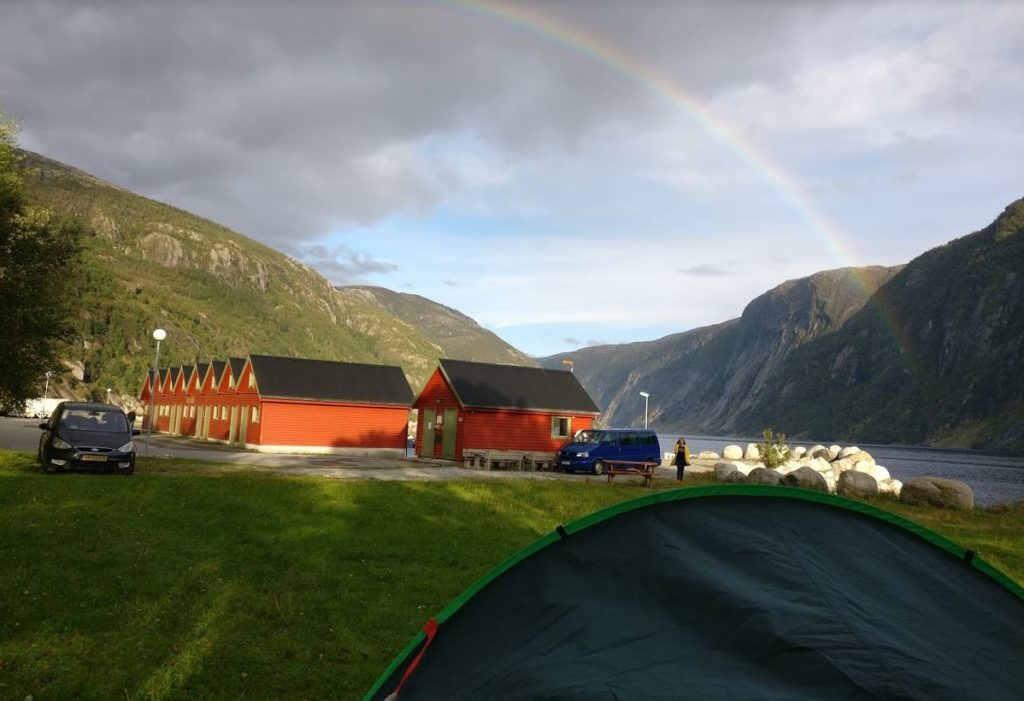
I must be honest, this wild camping spot doesn’t strictly follow the rules, as we were camping within 150 meters of these cabins. No-one was there, though, so we were okay with it.
Here’s another one.
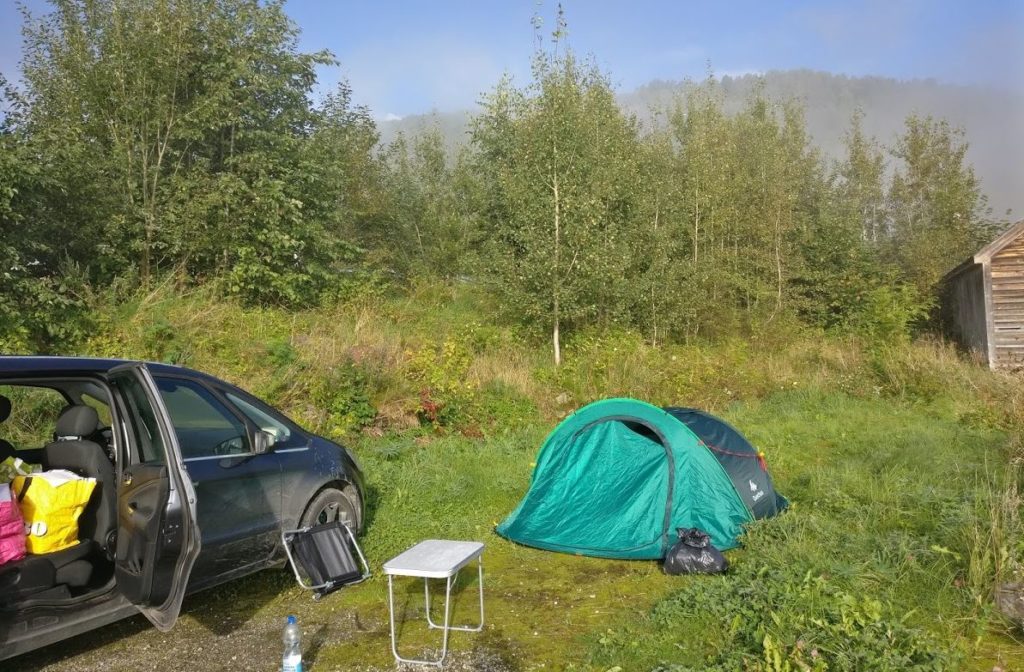
…. And another one!
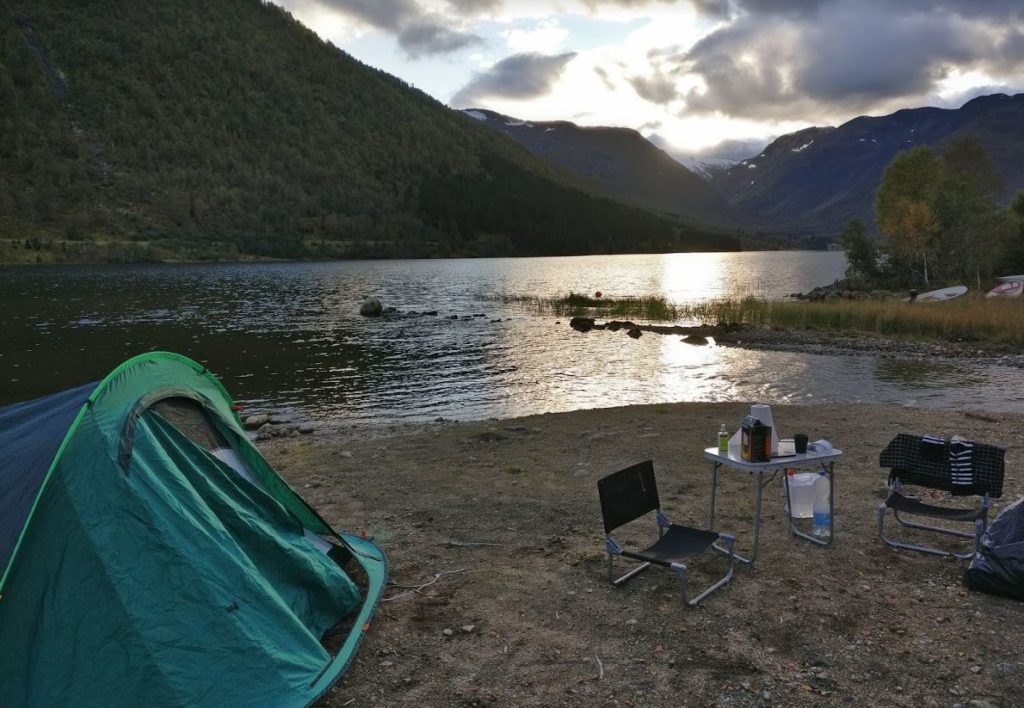
We always brought a garbage bag with us, in order to not leave any trash behind.
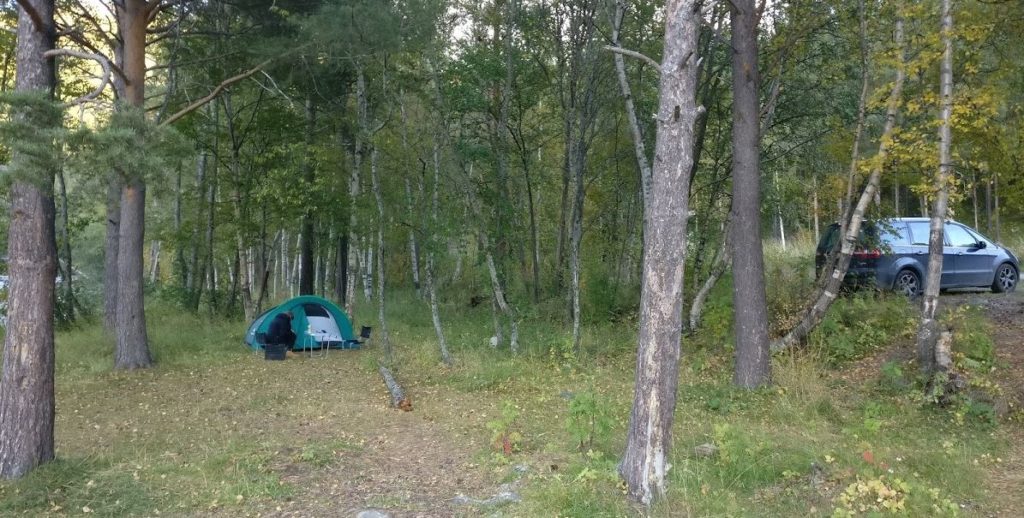
Here’s another one, where we had to set up our tent in the rain. Luckily, we brought a pop-up tent with us, which I was able to set up within a minute! (humble brag)
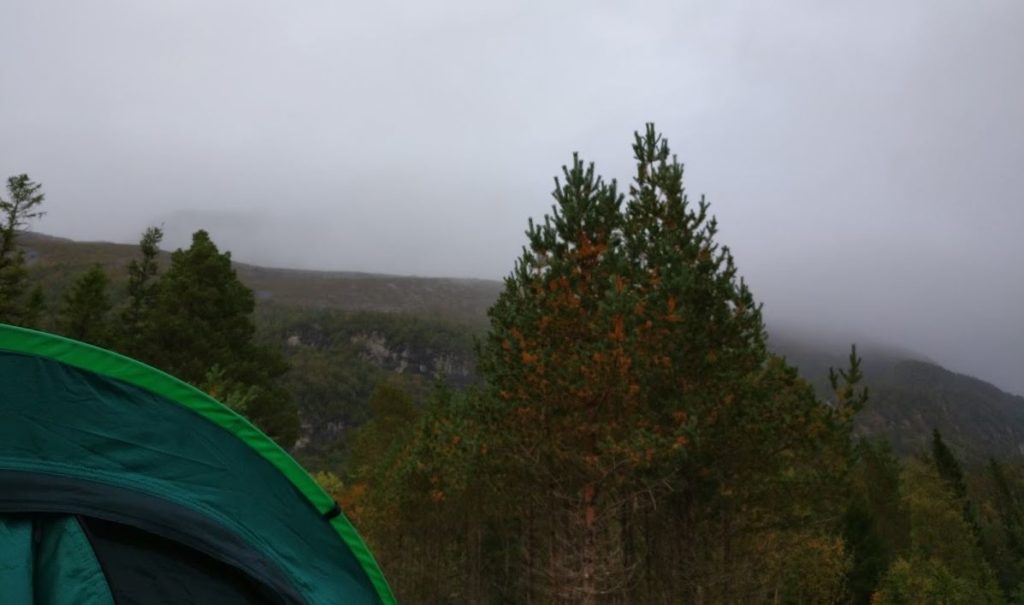
Here’s the exact same spot, when we woke up the next morning!

This is the stuff that I dreamed of when preparing for this road trip!
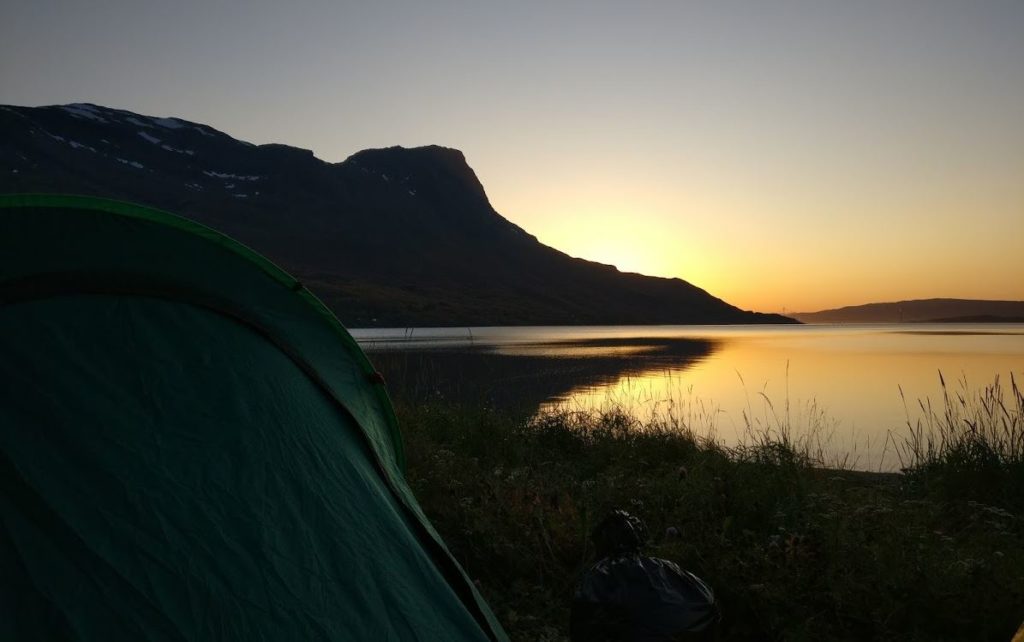
Whenever the weather was good enough, we collected some rocks and dry wood and built a campfire! These were truly memorable moments.
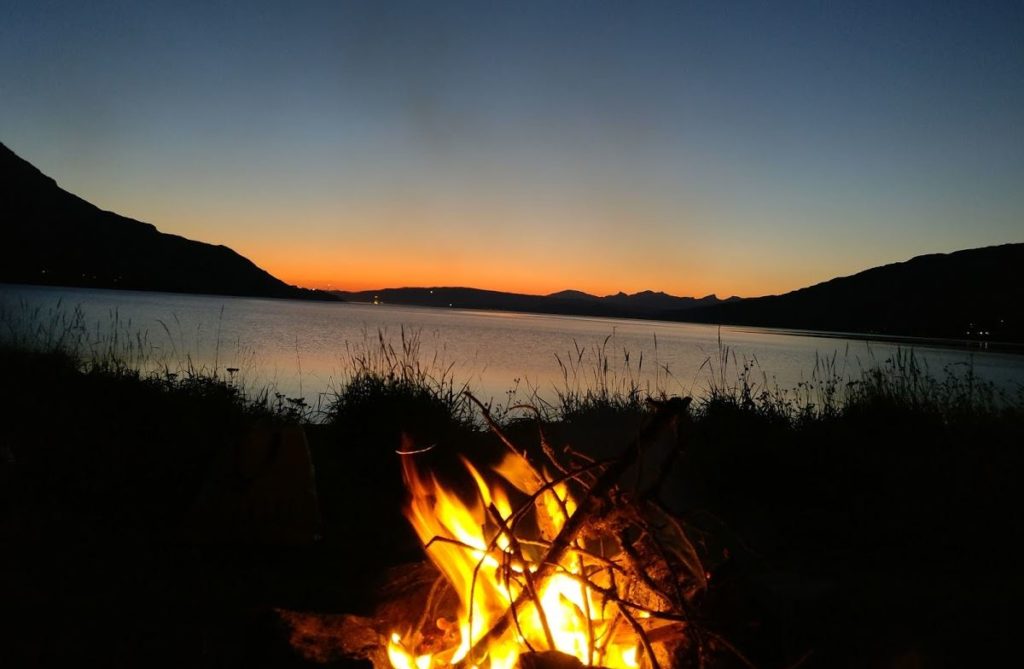
And to top it all off, we got to wild camp underneath the northern lights. To this day, this is still one of the most spectacular experiences of our lives.
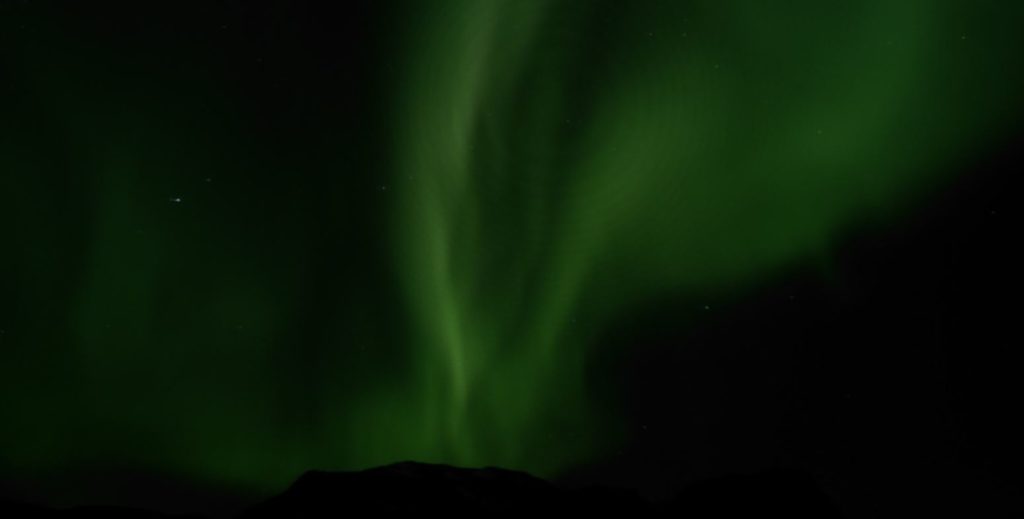
Wrapping up
There you have it. This is the most in-depth guide on how to find the perfect wild camping spot in Norway. Long story short, here’s how you find a wild camping spot:
- Figure out what you absolutely need in a wild camping spot.
- Start looking well before it gets dark.
- Get off the main roads! We found the most success when looking for unpaved, long winding roads that eventually hit a dead end.
- Don’t be too critical!
- Minimize your footprint (take your trash with you).
Did you miss anything? Do you want to add your own tips? Or are you planning your own road trip to Norway and want to ask more questions?
Leave a comment below and I’ll be more than happy to talk! 🙂
Ersfjordstranda is very easily found, as it’s located directly at the main road number 862, at Ersfjord. The fjord ends with twin coves, one of them a rocky coastline, however the other one is a home to Ersfjord village and the only sandy beach on Senja! The beach is relatively small, but a true gem as it’s surrounded by sharp mountain ridges. Ersfjordstranda is greatly loved by Senja’s visitors for two reasons: one – it’s a beach! A perfect location for long exposure photos at blue hour as you’re not likely to be disturbed by keen swimmers – ocean waters are just too cold for a dip! The beach is also a very popular wild camping spot in fact there are provisional tent pitches and spots for live-fire. This brings an amazing opportunity for atmospheric evening photography. And on top of that, it’s a great place to stay overnight.
Hi, thank you so much for your guide! Could you give more detail on exactly where you would park the car? Are you only using dedicated gravel patches for parking next to the road? Or are you just slightly pulling off the road in more remote areas?
That’s a good question. We did manage to find suitable parking for our car most of the times. Only on a couple of occasions did we park it in the grass somewhere. 🙂